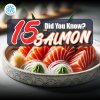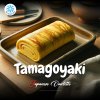Delve deeper! "Snow Fish" that you need to know..
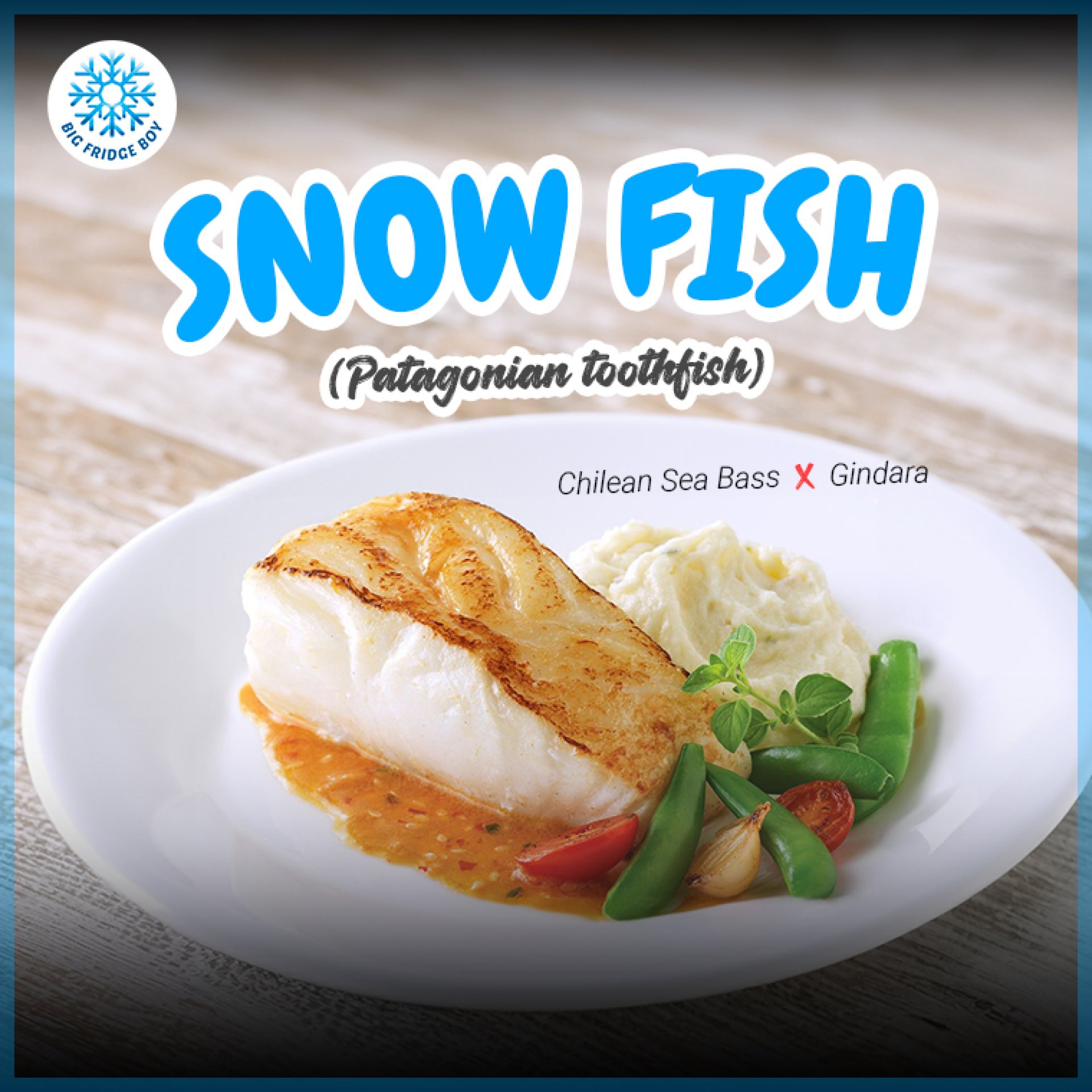
Why are they called "Snow Fish" ?
The term "Snow Fish" intriguingly captures the essence of the Patagonian Toothfish (Chilean Sea Bass) due to its pristine, cold-water habitat in the Southern Ocean, surrounding Antarctica. The name evokes images of the icy, remote waters it calls home, highlighting its association with the snow-covered landscapes of the polar regions. This common name also reflects the fish's white, flaky flesh, which, combined with its high-fat content, contributes to its luxurious mouthfeel and culinary appeal.
"When discussing 'Snow Fish,' there's often confusion between Chilean Sea Bass (Patagonian Toothfish) and Gindara (Sablefish/Black Cod). Although these fish share similarities in their texture, flavor, and culinary appeal, they are, in fact, distinct species. Both are celebrated for their tender, oil-rich flesh that imparts a luxurious mouthfeel, and their flavors are prized in gourmet cooking. Despite these resemblances, including similar shapes, meat coloration, and their rich, buttery taste, it's important to recognize that Chilean Sea Bass and Gindara come from different habitats and have unique biological characteristics. Understanding these nuances is key to appreciating each fish for its individual qualities."
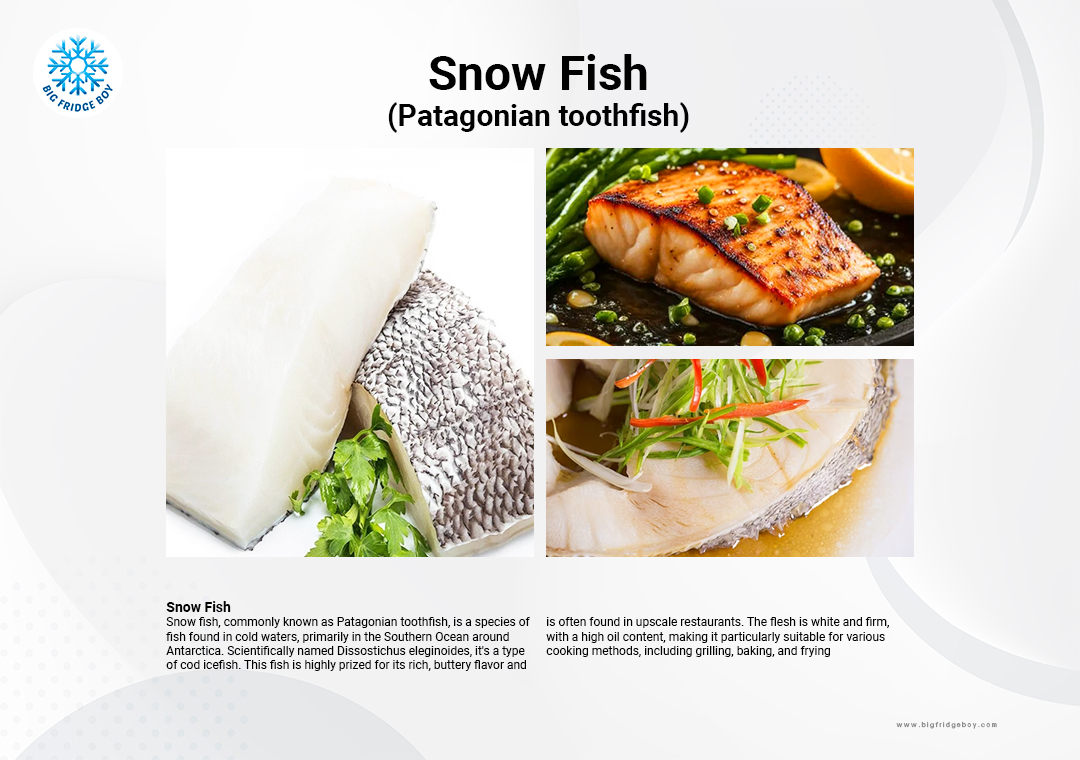
Snow fish, commonly known as Patagonian toothfish, is a species of fish found in cold waters, primarily in the Southern Ocean around Antarctica. Scientifically named 'Dissostichus eleginoides', it's a type of cod icefish. This fish is highly prized for its rich, buttery flavor and is often found in upscale restaurants. The flesh is white and firm, with a high oil content, making it particularly suitable for various cooking methods, including grilling, baking, and frying
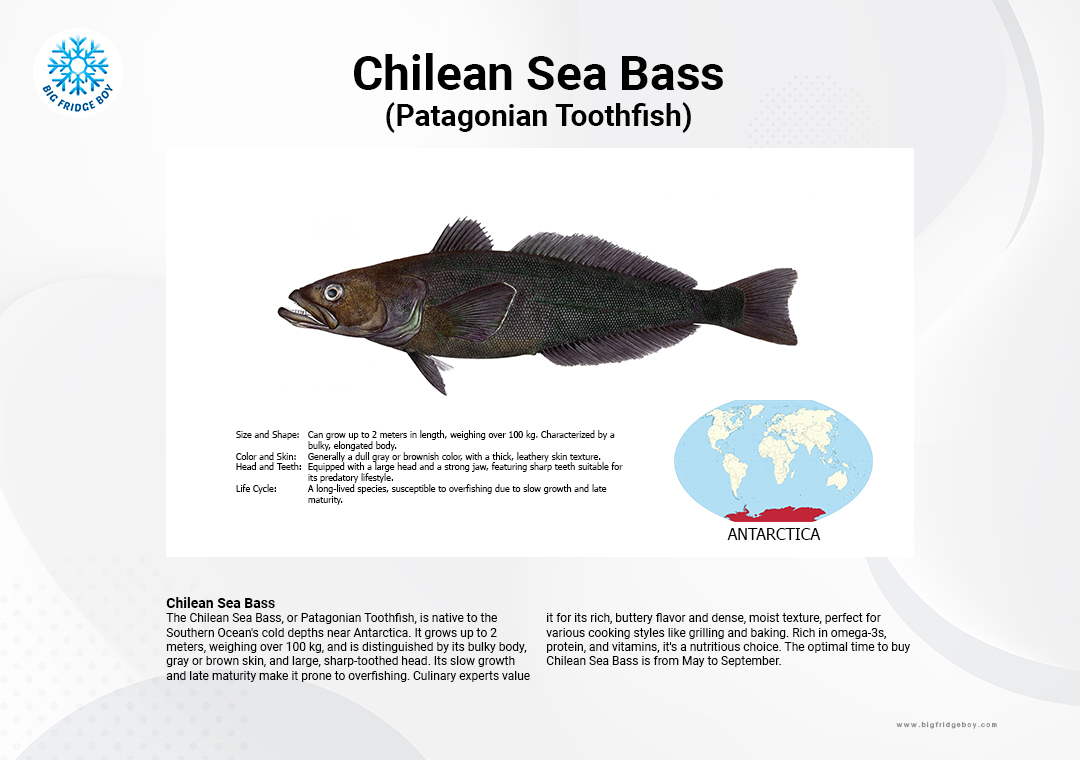
Chilean Sea Bass (Patagonian Toothfish)
- Alternative Names: Chilean Sea Bass for culinary purposes; Patagonian Toothfish in scientific and conservation circles.
- Habitat: Thrives in the cold, deep waters of the Southern Ocean, particularly around Antarctica.
- Physical Characteristics:
- Size and Shape: Can grow up to 2 meters in length, weighing over 100 kg. Characterized by a bulky, elongated body.
- Color and Skin: Generally a dull gray or brownish color, with a thick, leathery skin texture.
- Head and Teeth: Equipped with a large head and a strong jaw, featuring sharp teeth suitable for its predatory lifestyle.
- Life Cycle: A long-lived species, susceptible to overfishing due to slow growth and late maturity.
- Size and Shape: Can grow up to 2 meters in length, weighing over 100 kg. Characterized by a bulky, elongated body.
- Culinary Highlights:
- Flavor: Renowned for its rich, buttery, and balanced taste.
- Texture: Offers a dense, flaky, and moist texture, maintaining firmness through various cooking methods.
- Popular Preparations: Often grilled, baked, pan-fried, or poached, usually with light seasoning to emphasize its natural flavors.
- Nutritional Benefits: High in omega-3 fatty acids, protein, and essential vitamins, beneficial for heart health.
- Flavor: Renowned for its rich, buttery, and balanced taste.
- Seasonality and Availability:
- Chilean Sea Bass: Optimal availability from May to September.
- Chilean Sea Bass: Optimal availability from May to September.
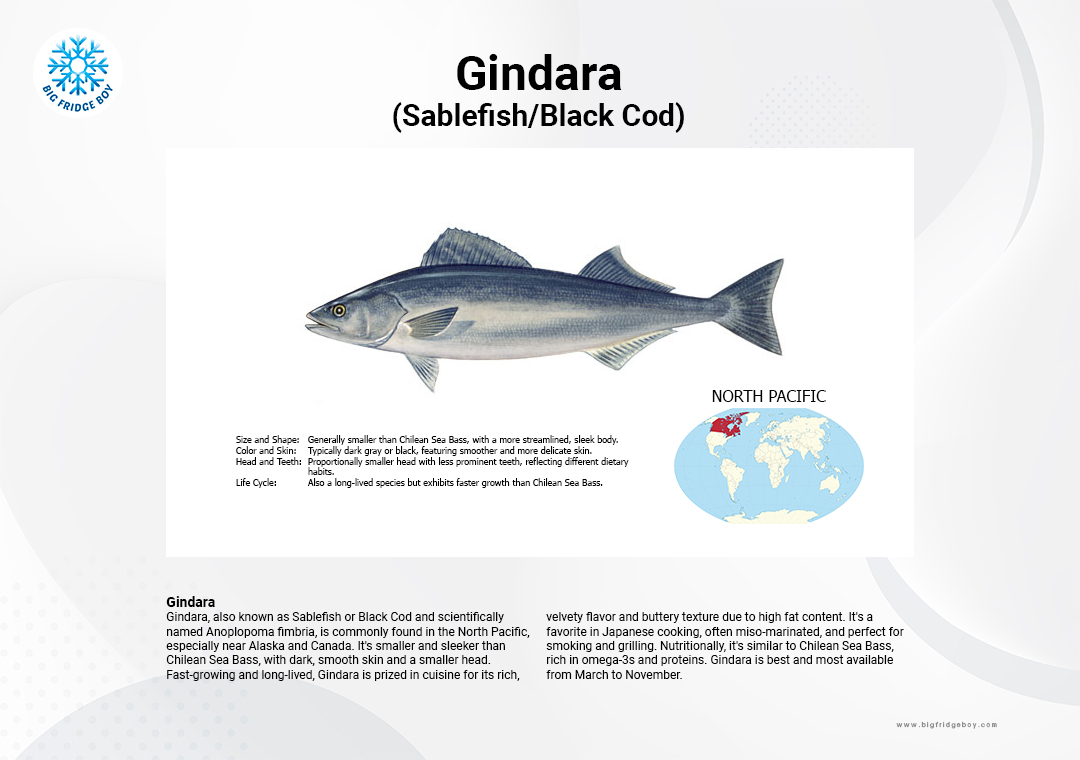
Gindara (Sablefish/Black Cod)
- Scientific Name: Anoplopoma fimbria.
- Recognized Names: Known as Sablefish in scientific and fishery sectors; Black Cod in North American culinary contexts; Gindara in Japanese cuisine.
- Habitat: Predominantly found in the North Pacific, especially off the coasts of Alaska and Canada.
- Physical Characteristics:
- Size and Shape: Generally smaller than Chilean Sea Bass, with a more streamlined, sleek body.
- Color and Skin: Typically dark gray or black, featuring smoother and more delicate skin.
- Head and Teeth: Proportionally smaller head with less prominent teeth, reflecting different dietary habits.
- Size and Shape: Generally smaller than Chilean Sea Bass, with a more streamlined, sleek body.
- Culinary Highlights:
- Flavor: Known for its rich, velvety, and slightly sweet taste.
- Texture: Characterized by a smooth, buttery texture, due to its high fat content.
- Favored Preparations: Widely used in Japanese dishes like miso-marinated black cod; ideal for smoking and grilling.
- Nutritional Profile: Similar to Chilean Sea Bass in omega-3 content; a substantial source of protein and essential nutrients.
- Flavor: Known for its rich, velvety, and slightly sweet taste.
- Seasonality and Availability:
- Gindara: Most abundant from March to November.
- Gindara: Most abundant from March to November.
Comparative Analysis
- Habitat: Chilean Sea Bass is native to the Southern Ocean, while Gindara is found in the North Pacific.
- Physical Differences: Chilean Sea Bass is larger with thicker skin, whereas Gindara is sleeker with darker skin.
- Texture and Taste: Both offer a buttery texture; Chilean Sea Bass is subtler in flavor, Gindara is richer and sweeter.
- Culinary Uses: Chilean Sea Bass is adaptable to various cooking methods; Gindara excels in dishes requiring gentle cooking.
- Nutritional Content: Both are rich in omega-3 fatty acids, though Gindara has a higher fat content.
When referring to "Snow Fish," it typically means the Chilean Sea Bass, which is the common name for the Patagonian Toothfish (Dissostichus eleginoides). This is the specific species found in the cold waters of the Southern Ocean, particularly around Antarctica, and is known for its rich, buttery flavor and firm, white flesh. The names "Snow Fish," "Chilean Sea Bass," and "Patagonian Toothfish" all refer to the same fish species.
Gindara, or Sablefish/Black Cod (Anoplopoma fimbria), is a different species and is not referred to as Snow Fish.
Why Should We Eat Snow Fish?
Nutritional Benefits: Snow Fish, particularly the Chilean Sea Bass, is lauded for its high content of omega-3 fatty acids, offering significant health benefits such as improved heart health, brain function, and joint mobility. Its lean protein and rich array of vitamins and minerals make it a nutritious addition to any diet.




